Alice Cooper – From the Inside: Revisiting the Asylum
Alice Cooper soared to incredible heights in the seventies. As his solo career eclipsed the original Alice Cooper band, the shock rocker became a bona fide star. Alice appeared on talk shows, hung out with celebrities and even hosted The Muppet Show. Alice Cooper had transcended the role of rock star to infiltrate American popular culture.
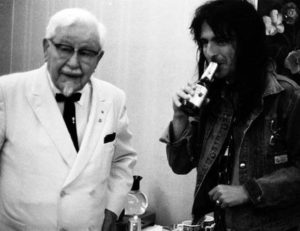
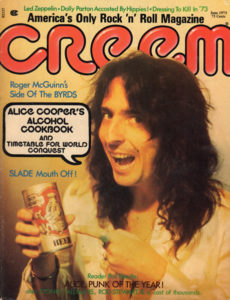
Behind the scenes Alice was unraveling. Nearly a decade of alcohol abuse had taken its toll. Rumored to drink a case per day, Alice coughed up blood each morning before cracking open his first beer. Having hit rock bottom, Cooper agreed to seek treatment for alcoholism.

Alice Cooper spent the final months of 1977 incarcerated in a New York sanitarium. Far from a modern rehab center, the hospital housed patients with severe mental illness. While living beside genuinely insane inmates, Cooper confronted his demons and emerged clean and sober.
Alice wasted little time getting back to work. Writing sessions yielded ten songs that mixed humor with reflection about life inside the asylum. In 1978, a newly sober Alice released From the Inside.

Judging from the front cover, From the Inside was the same old Alice Cooper. Wearing his trademark makeup, Cooper’s face was a ghastly vomit green. A hype sticker with identifying information fell away once the shrink-wrap was removed, leaving only the gruesome image of Alice.

The simplicity of a portrait quickly gave way to inventive packaging. A slit down the front cover opened to unveil the inside of an asylum. Cartoonish caricatures of mental patients mingled across the triple gatefold in a lighthearted take on Cooper’s incarceration.

Beyond the gathering of assorted crazies, a functional door to the Quiet Room invited fans to peek inside. Once opened, the cutout revealed Alice inside a padded cell. Sitting dejected and despondent, it was sobering to realize the photo was biographical.
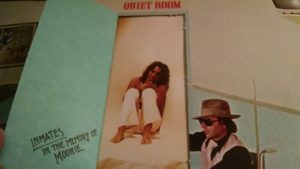
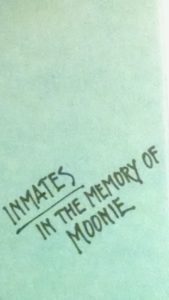
Still, Cooper was one of the lucky ones and he knew it. A tribute to Keith Moon graced the Quiet Room’s door. Unlike “Moonie,” Cooper’s battle with alcohol had a happy ending as demonstrated on the rear sleeve. This time, a pair of doors opened to a smiling Alice with release papers in hand.


Musically, From the Inside was a departure. Slickly produced and overly accessible, the grit and raw power that made Cooper a primal force was glaringly absent. The press was quick to criticize Alice for embracing pop over power.

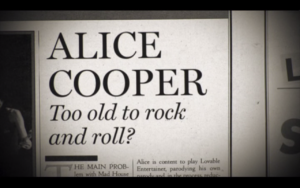
It’s little wonder that From the Inside alienated hard rock fans. Alice had joined forces with long-time Elton John lyricist, Bernie Taupin. Members of the pop icon’s band even contributed guitar and bass. Dick Wagner remained the one link to previous solo albums. Even with Wagner’s considerable contributions, From the Inside was the product of session musicians, not a dedicated rock band.
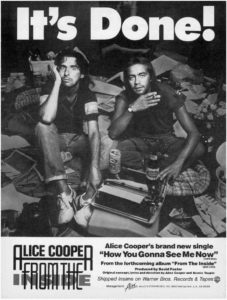
There were other changes, most notably the absence of Bob Ezrin. David Foster now assumed the role of producer. His pristine production was miles away from the organic intimacy of early Coop records. Still, the new dynamics worked. Despite the noise made by critics, From the Inside was a memorable album that ranks among the best of Cooper’s solo career.

Much of From The Inside finds Alice in a reflective mood. Both album sides begin with a sobering look at his alcoholism. The title track recalls “Drinking whiskey in the morning light“ as he “laughed about it” with “long haired drunken friends.” After all, this was rock and roll. Hard partying was practically a job requirement. With whiskey glass held high, Alice “proposed a toast to Jimmy’s ghost,” woefully unaware how close he would come to the fate of Morrison and Hendrix.
A pair of ballads offers further reflection. “The Quiet Room,” finds Alice a shattered man. We learn padded cells have a function beyond isolating unruly patients. Solitary confinement keeps patients safe…from themselves. Unstable and raw with emotion, Cooper admits to suicidal tendencies.
They’ve got this place
Where they’ve been keeping me
Where I can’t hurt myself
I can’t get my wrists to bleed
Just don’t know why
Suicide appeals to me.
Ultimately Alice finds a reason to live. It’s not fame, money, or a return to the stage that inspires Cooper. It is love. Memories of a “nightgown on the stairs” and pictures of his wife offer strength in a time of weakness. “The Quiet Room” is essentially a tender love song that laments the loss of domestic tranquility.
Much of “The Quiet Room” was indirectly addressed to his wife. The album’s second ballad, “How You Gonna See Me Now,” is a literal letter home.
Dear darlin’, surprised to hear from me
Bet you’re drinking coffee, yawning sleepily
Just to let you know, I’m gonna be home soon
I’m kind of awkward and afraid,
Time has changed your point of view.
The passage of time was no understatement. Cooper was incarcerated for three months, an eternity for someone undergoing the agony of detox and recovery. Sufficient time had lapsed for soul-searching, reevaluation and second-guessing. Perhaps wreckage from an alcoholic past had left lingering resentment. Would he be perceived as a weakened shell of his former self? Sick with self-doubt, a vulnerable husband sought penance from the only person that mattered.

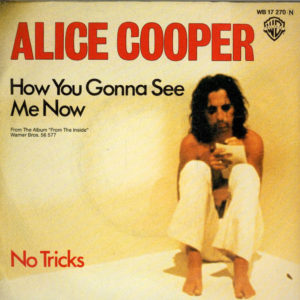
Choosing to record what could have been a private exchange brings Cooper’s vulnerability into the public domain. The ballad can also be read as a letter to fans. Alcohol had fueled the exploits of road life. Would the public accept a sober madman? Was the character of Alice Cooper incompatible with sobriety? These doubts would have serious repercussions after cocaine became a destructive substitute for Budweiser.

Introspective songs of recovery possess the stinging bite of bitter honesty. Yet, From the Inside isn’t entirely autobiographical. The majority of songs are based on people that Cooper met inside the asylum.
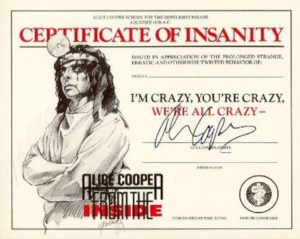
“Jackknife Johnny” is a tribute to a tortured Vietnam veteran. Returning from war “shell-shocked and dazed,” Johnny soon found himself “strung-out on Morphine and Meth.” Self-medication rarely works, particularly with hard drugs. This “floor mopping flunky” escaped the jungles of Vietnam only to become a tool of “institute lackies.” With a precarious mental state further damaged by prolonged drug use, one wonders if a sanitarium is the final destination for this shrapnel-carrying vet.
For many, the asylum IS a permanent destination. From the outset, the stars of “Millie and Billie” wonder “will we get better/will we stay same,” before acknowledging that “our world’s an asylum.” While Alice found recovery and freedom, many of his fellow inmates would remain institutionalized.
A duet between two inmates, “Millie and Billy” is the story of a love triangle gone horribly wrong. Marcy Levy, famous for singing on Clapton’s “Lay Down Sally,” plays the part of Millie. As the “criminally insane” couple rehash a murderous night through a tender ballad, the results are campy are fun. Even with the ghastly details of Milly’s “late husband Donald…all sliced up and sealed tight in baggies,” humor overrides the sense of horror that was once a Cooper trademark.
Humor appears elsewhere, most notably in “Nurse Rozetta.” No exploration of life inside a hospital would be complete without a nurse. Take an attractive woman, immerse her in an environment where inmates have been cut off from the outside world, and it’s a recipe for clinical perversion.
We meet Rozetta through the eyes of an inmate. There is enough connection to reality where the patient is sly about his desire, refusing to “let her catch me peering down her sweater.” Still, there is an intense physical element that cannot be contained. As he “secretly” undresses the well-endowed nurse with his eyes, listeners are privy to an unsolicited confession. “I’m suddenly twice my size/my pants are all wet inside.” Part juvenile humor, part creepy perversion, in the end, “Nurse Rosetta” is the sad tale of a man who can’t reconcile religion with lust.

In 1979, Alice Cooper hit the road in support of From the Inside. Dubbed the “Mad House Rock Tour,” Alice performed tracks from the new record along with classic material. The tour’s stop in San Diego was filmed for prosperity, resulting in the VHS release The Strange Case of Alice Cooper. Alice turned in an energetic performance that proved alcohol was not a pre-requisite for rock and roll.
Although Cooper refrained from drinking, the Mad House Rock Tour was fueled by heavy cocaine use. Creativity was hampered by a new addiction as Alice fell into another downward spiral. Subsequent albums, some of which Cooper has no recollection of recording, failed to capture the attention of most fans. From the Inside has since developed a reputation as the last great Alice Cooper album until his celebrated 80’s comeback, which, by the way, would feature a 100% clean and sober Alice Cooper!





I went to this concert on 4.1.79 in Inglewood, Ca., and The Babys opened the concert.
Totally agree… I think this one is the finest Alice´s album. I understand the position of many critics that insist in calling it a shame and a treason to the rawness of Alice´s previous work, but I find it as a treat both musically and lirically. I think that this review makes the honor that From the Inside deserves…